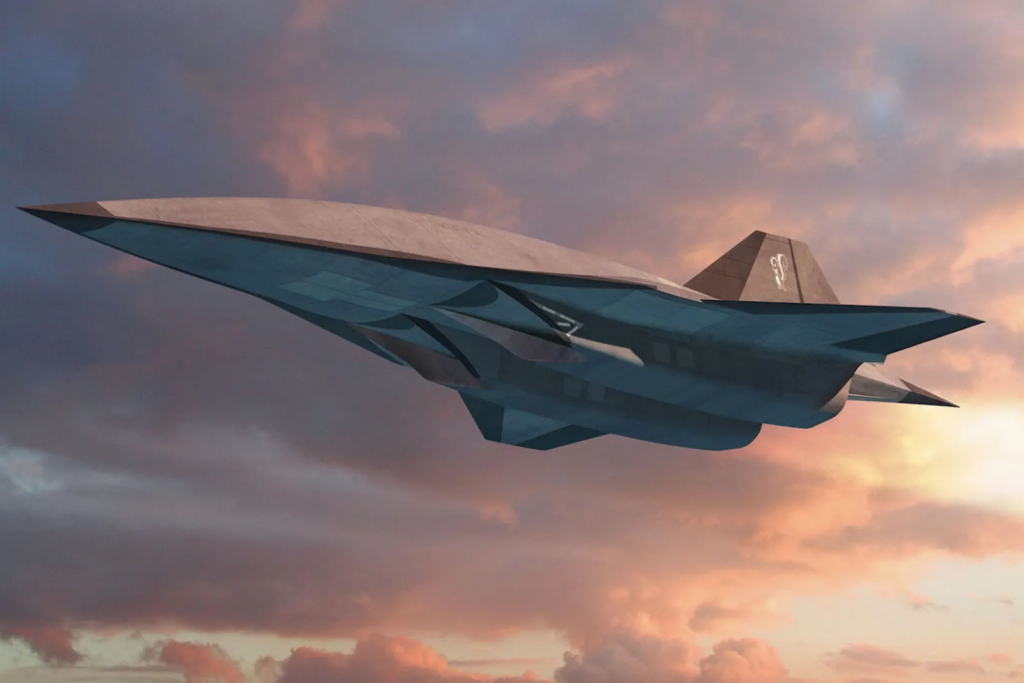
INTRODUCTION:
Hypersonic spy planes are advanced reconnaissance aircraft capable of traveling at speeds greater than Mach 5 (five times the speed of sound). These planes are designed to conduct high-speed surveillance, intelligence gathering, and reconnaissance missions with minimal risk of detection or interception. Unlike traditional spy planes or drones, hypersonic aircraft offer rapid data collection and high-altitude operations, making them a valuable asset in modern warfare and intelligence.
One of the most well-known hypersonic spy plane projects is the SR-72 “Son of Blackbird”, a successor to the legendary SR-71 Blackbird. Developed by Lockheed Martin’s Skunk Works, the SR-72 is expected to revolutionize aerial reconnaissance with its extreme speed and advanced stealth capabilities.
Workings of Hypersonic Spy Planes:
Hypersonic spy planes operate on a combination of advanced propulsion systems and aerodynamic designs that allow them to travel at extremely high speeds. The key components of their working mechanism include:
- Propulsion System
- These planes typically use scramjet (supersonic combustion ramjet) engines, which compress incoming air before combustion, allowing sustained hypersonic flight.
- Some models might use a dual-mode engine, combining a traditional jet engine for takeoff and a scramjet for hypersonic speeds.
- Aerodynamic Design
- They have a streamlined, heat-resistant airframe made of advanced materials like titanium and carbon composites to withstand extreme temperatures (over 2,000°F or 1,100°C).
- The design minimizes air resistance and reduces radar cross-section for stealth operations.
- Navigation and Communication
- Hypersonic planes rely on inertial navigation systems, GPS, and AI-powered flight controls to operate effectively at high speeds.
- Secure satellite communication links provide real-time data transmission.
- Stealth and Evasion
- Their speed and altitude (above 80,000 feet) make them nearly impossible to intercept using current air defense systems.
- Advanced electronic warfare (EW) systems help in avoiding detection by enemy radars.
Advantages of Hypersonic Spy Planes:
- Unmatched Speed
- Hypersonic planes can cover vast distances in minutes, reducing the time required for intelligence gathering.
- Difficult to Detect and Intercept
- Their high speeds and stealth design make them nearly invulnerable to enemy fighter jets and missiles.
- Real-Time Intelligence Gathering
- Equipped with high-resolution sensors, cameras, and advanced communication systems, they can provide near-instant battlefield data.
- Strategic Military Superiority
- These aircraft give nations a significant edge in surveillance and military strategy, allowing rapid response to threats.
- Versatility
- They can be used for a variety of missions, including surveillance, electronic warfare, and possibly even weapon delivery.
Disadvantages of Hypersonic Spy Planes:
- Extremely High Cost
- Development, manufacturing, and maintenance of hypersonic planes require billions of dollars in investment.
- Engineering Challenges
- Managing extreme heat, material stress, and fuel efficiency at hypersonic speeds is technologically complex.
- Limited Flight Duration
- Due to high-speed fuel consumption and extreme operating conditions, these planes have a shorter operational time compared to traditional aircraft.
- Potential for International Tensions
- The use of hypersonic spy planes may provoke hostilities and lead to an arms race among rival nations.
- Vulnerability to Future Countermeasures
- While currently difficult to intercept, future advancements in missile defense systems and AI-powered tracking could reduce their effectiveness.
